Rtrilo is computer vision software that combines deep learning technologies with various types of image processing technologies. Capable of identifying specific objects and areas from both videos and stills, it enables high-level control of robots. The software provides robots and various other machines such as autonomous carts with the functions of “sight.”
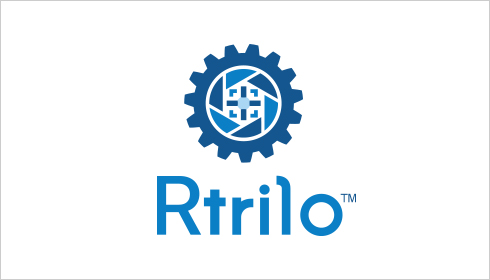
“Computer vision” refers to technology that identifies objects in videos and still images, thereby providing computers with visual functions. Rtrilo combines image processing and deep learning technologies to detect and identify specific objects—tasks that had proven difficult for existing image processing software. In addition, the software leverages unique image processing technologies to provide situational awareness that can be applied to a variety of different scenarios.
■ Usage scenarios
Rtrilo can be equipped to robots and various other machines to detect specific objects and obstacles, identify no-entry areas, and grasp the surrounding environment. In this way, the software provides machines with the functions of “sight.” It can be used in the following scenarios.
Detecting travel routes and obstacles
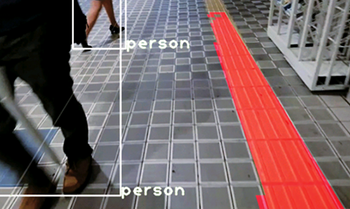
Rtrilo detects no-entry areas and travel routes—which distance sensors and other devices find it hard to differentiate between— in real time, enabling robots to travel flexibly and autonomously.
Recognition of specific objects
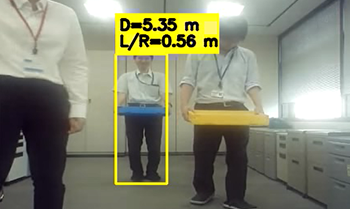
Rtrilo is capable of remotely recognizing objects with specified colors and shapes, and enabling robot movements to be controlled accordingly. In the image, Rtrilo is tracking the human holding the blue case.
Identifying how to grip different objects
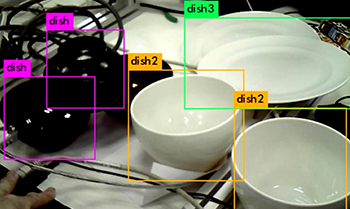
By incorporating deep learning models that have been learned via unique methods, Rtrilo can identify how to grip different tableware, and differentiate between agricultural grains and weeds.
Reading seven-segment displays
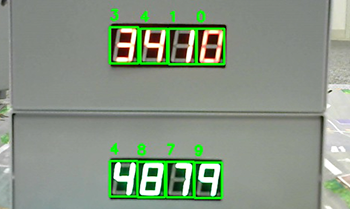
Rtrilo is able to recognize a variety of information, such as warning lamps and seven-segment displays, in camera images, and send real-time alerts to managers or other destinations. This is useful for existing devices that, due to various constraints, cannot easily be connected to IoT.
The construction of deep learning models for specific object detection and image classification requires a variety of processes, including complex pre-processing, defining of deep learning models, adjustment of learning parameters, and performance evaluation. Rtrilo Learning Box is equipped with the functions required to construct such models and so enables customers to easily construct deep learning models themselves.
■ Types of deep learning models that can be constructed
- Image classification: the ability to differentiate between what is being shown in various images
- Object recognition: the ability to detect different objects in an image, and differentiate between them
■ Pre-processing
- Data Annotations (create a labeled dataset)
- Data splitting (train, validation, and test)
- Image amplification (noise, cropping, color changes, blurring, contrast changes, rotation, geometric changes, etc.)
■ Learning
- After various parameters have been specified, including the model to be applied, imbalance corrections, learning cycles, feature scaling, etc., learning programs can be executed with a single command line.
- Loss functions, optimization algorithms, learning rates, and other learning methods can be freely adjusted, and unique network models can be constructed.
■ Evaluation
- Output learning curves, various indices (precision and recall ratios, f-scores), and confusion matrices
- Output erroneously judged images
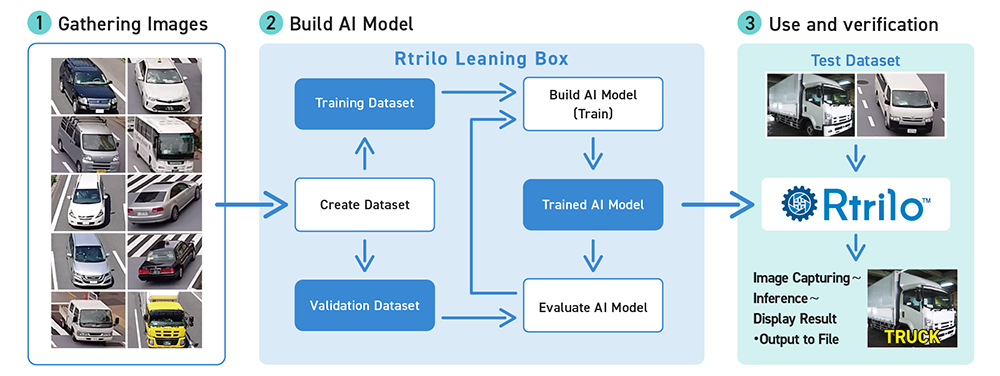
Rtrilo Parking Monitor is a parking lot status monitoring service using camera images and AI. It provides the following two types of services:
Based on images from a camera installed at the parking lot, the service uses a pre-trained AI model and a proprietary algorithm to determine the state of vacancies within the lot, as well as to provide information to users via the web and on signage. This system can determine the vacancies in a parking lot with just one camera overlooking the whole area. As such, it is easy to install and maintain the necessary equipment for this system compared to conventional information collection methods that require a sensor at each parking space. This means that Rtrilo Parking Monitor can be implemented at a low cost.
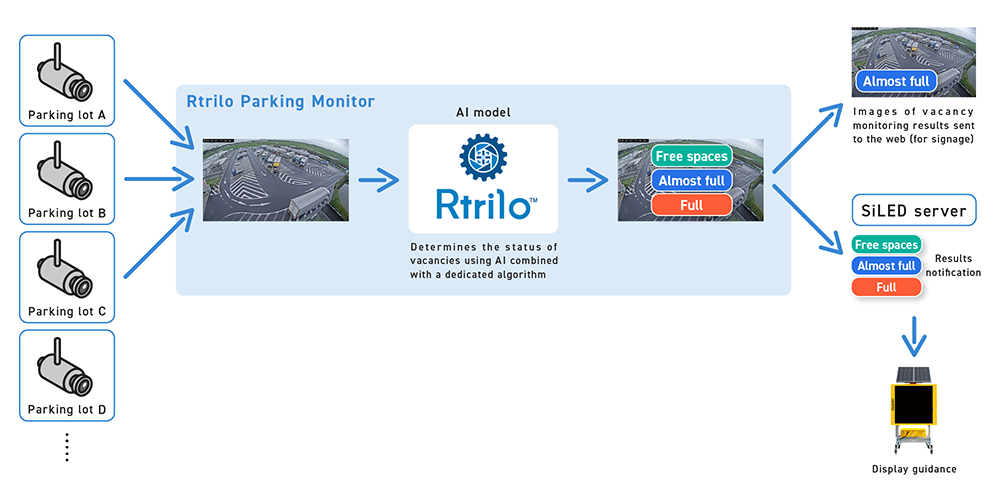
- 拡大
- Overview of the congestion monitoring service
Captured images are managed in a cloud server, allowing for the status of multiple parking lots to be understood in a cross-sectional manner. It is also possible to check usage history.

- 拡大
- Example of screen showing parking lot usage
Deep learning technology is being utilized at an increasing rate within the field of image recognition. When combined with a dedicated algorithm proprietarily developed to mitigate climate effects such as mist as well as timeline variation, this boosts the system's accuracy in understanding the status of parking lots. We are currently filing for a patent regarding this system. (Japanese Patent No. 7458812)
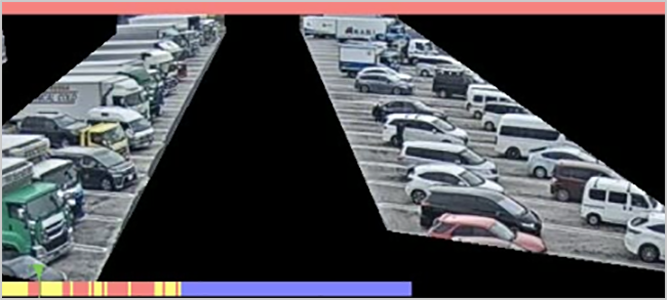
- 拡大
- Example of the system identifying a full parking lot
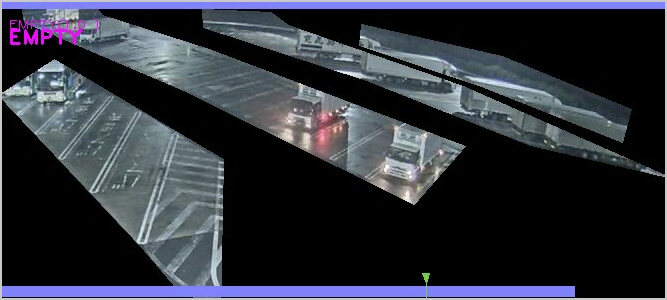
- 拡大
- Example of the system identifying a parking lot with many vacancies
Based on images from a camera installed at the parking lot, the service monitors the status of parking spaces and sends notifications to other systems, such as digital signage that displays the status, or information provision systems.
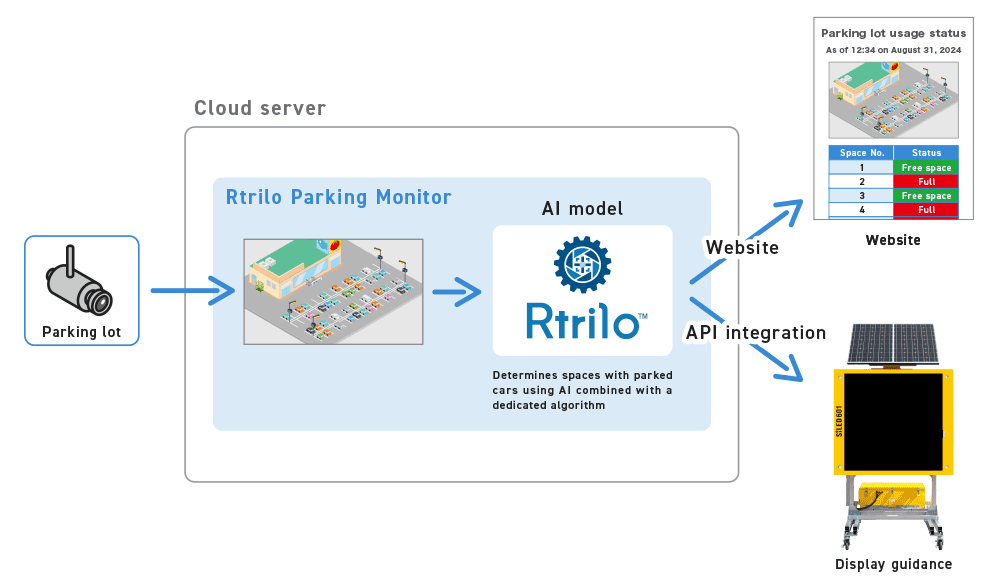
- 拡大
- Overview of the parking space monitoring service
Using deep learning—a technology that is being utilized more and more in the field of image processing—combined with a dedicated algorithm developed in-house, this service calculates the parking time for each parking space. This enables the sharing of information about vacancies as well as the analysis of parking time in each parking space.
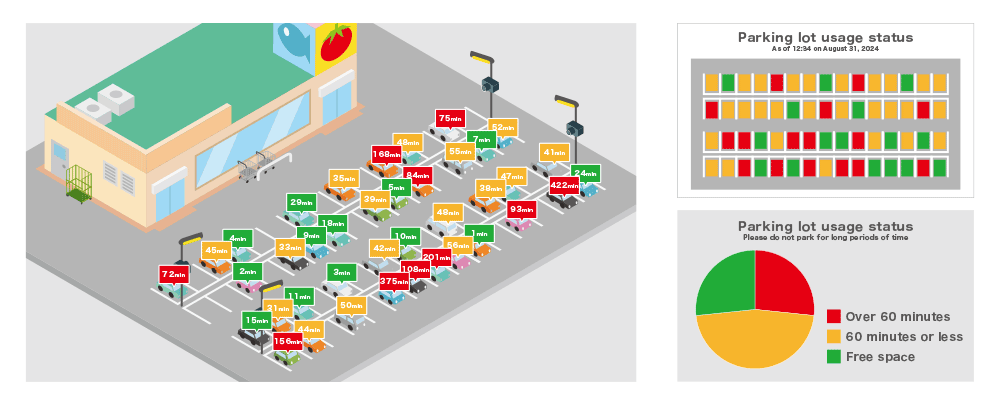
- 拡大
- Example of screen showing parking lot usage
AI can detect areas of road that are closed off with cones and signage during maintenance in real time. This system can also send alert notifications to maintenance workers when it detects cars entering these areas without permission, thereby helping prevent the workers suffering accidents at the hand of external parties.
This system can be run with just a camera and edge computer. It can carry out monitoring automatically without any need to manually define the area that is closed off (Japanese Patent No. 7209785).
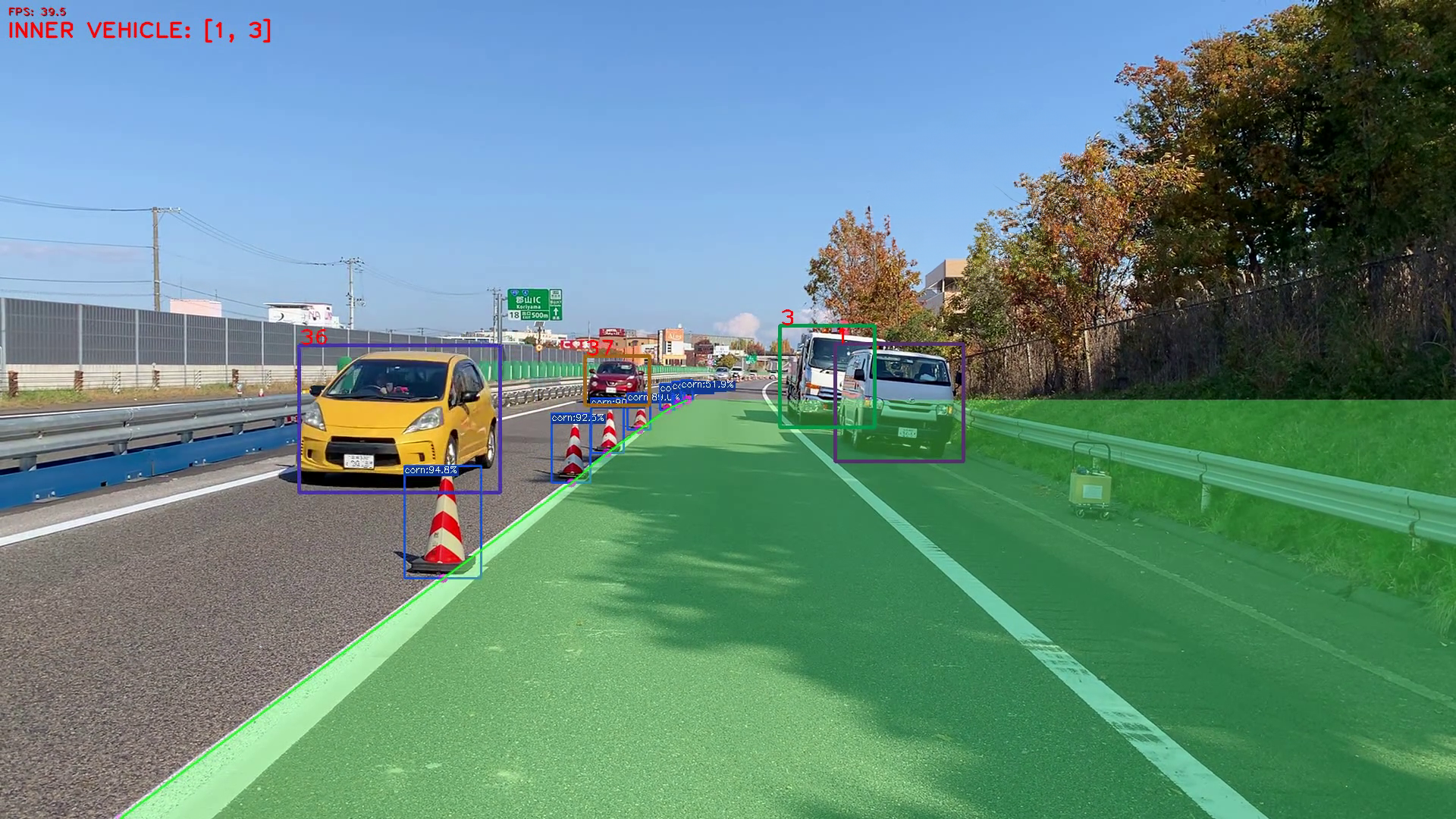
-
 Rtrilo pamphlet
(1,187KB)
Rtrilo pamphlet
(1,187KB)